Site pages
Current course
Participants
General
MODULE 1. FLUIDS MECHANICS
MODULE 2. PROPERTIES OF FLUIDS
MODULE 3. PRESSURE AND ITS MEASUREMENT
MODULE 4. PASCAL’S LAW
MODULE 5. PRESSURE FORCES ON PLANE AND CURVED SUR...
MODULE 6.
MODULE 7. BUOYANCY, METACENTRE AND METACENTRIC HEI...
MODULE 8. KINEMATICS OF FLUID FLOW
MODULE 9: CIRCULATION AND VORTICITY
MODULE 10.
MODULE 11.
MODULE 12, 13. FLUID DYNAMICS
MODULE 14.
MODULE 15. LAMINAR AND TURBULENT FLOW IN PIPES
MODULE 16. GENERAL EQUATION FOR HEAD LOSS-DARCY EQ...
MODULE 17.
MODULE 18. MAJOR AND MINOR HYDRAULIC LOSSES THROUG...
MODULE 19.
MODULE 20.
MODULE 21. DIMENSIONAL ANALYSIS AND SIMILITUDE
MODULE 22. INTRODUCTION TO FLUID MACHINERY
LESSON 24. LAMINAR AND TURBULENT FLOW
Laminar and turbulent flow
In laminar flow the streak-lines are straight lines.
The fluid flows smoothly down the pipe.
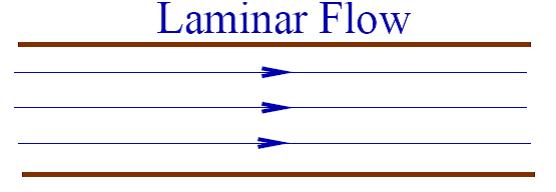
In turbulent flow the streak-lines show wiggles and vortices. The fluid does not flow smoothly down the pipe.
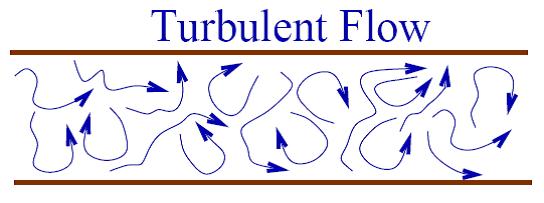
What happens when fluid enters a pipe?

The fluid adjacent to the wall sticks to the wall due to friction effects. This is the no-slip condition and occurs for all liquids.
• This boundary layer grows until it reaches all parts of the pipe.
• Inside the inviscid core, viscosity effects are not important.
• The entrance region for laminar flow is given by
![]()
Past here the flow is fully developed.
Laminar flow analysis
Assumptions, outside entrance region:
![]()
And steady flow. Horizontal flow
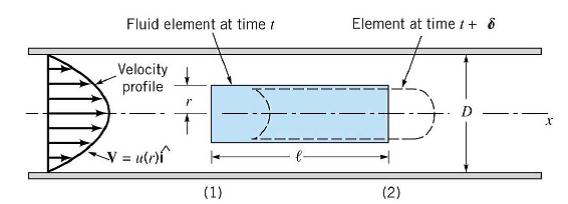
Apply F = ma to a cylinder.
The cylinder becomes distorted as t → t + ∂t
• The pressure is constant along the vertical direction.
• The pressure along horizontal direction does change. Δp = p2 − p1 < 0
• There is a viscous shear stress acting along the surface cylinder and The shear stress is a function of the radius of the cylinder.
Application of F = ma

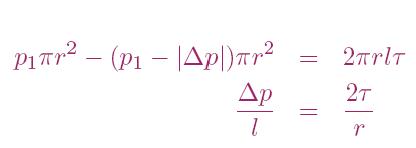

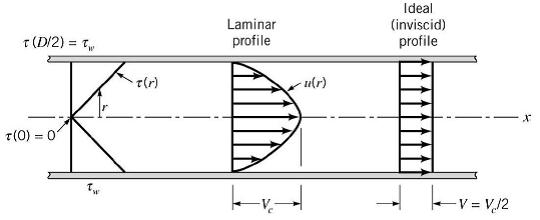
The shear stress is largest at the walls
Laminar velocity profile
To determine the laminar velocity profile, assume we have a Newtonian fluid, so
The flow rate is parabolic, with largest velocity in middle of pipe and zero velocity at wall.
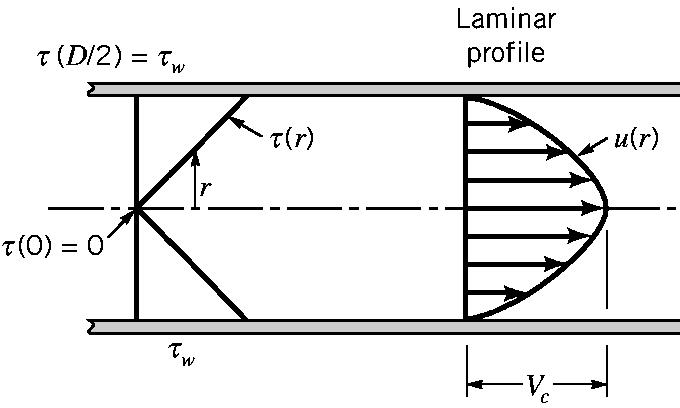
Laminar flow rate
Just need to integrate the laminar velocity profile over the cross sectional area. Divide cross section into thin annular strips
Pouiseuille’s Law and Interpretation
The fundamental result

is usually called Poiseuille’s Law. Laminar flow in pipes is sometimes termed Hagen-Poiseuille’s flow.
Flow along a pipe is driven by a pressure difference.
The viscosity acts to retard the passage of the fluid along the pipe through the no-slip condition at the wall. The flow rate
